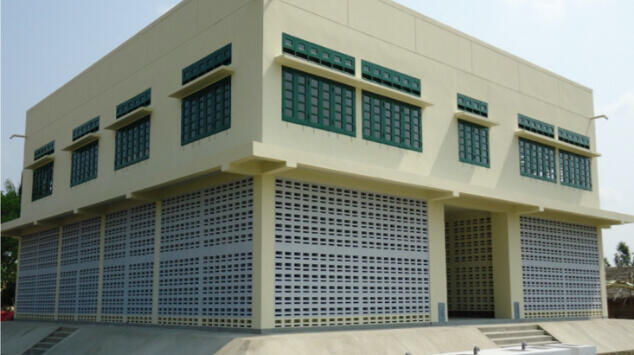
Menu
Menu

A large cyclone "Nargis" hit Myanmar on May 2-4, 2008 resulting in approximately 140,000 dead/missing and total damage of approximately USD 4 billion. From the Ayeyarwady Delta to Yangon, many buildings collapsed and were submerged, about 1,600 elementary schools were completely destroyed and about 2,400 schools were partially destroyed. For this reason, the Japanese government provided continuous emergency assistance in cooperation with international aid agencies, particularly provision of emergency relief supplies and dispatch of International Emergency Relief Team. In addition, a disaster prevention field project formulation survey was conducted in August 2008 after the disaster, in which we confirmed a delay of the reconstruction of elementary schools in the coastal area, the urgency of construction of evacuation facilities to protect human lives from strong winds and storm surges from the cyclones, and improving the educational environment. We were selected as the consultant for this reconstruction support and started a field survey in February 2009, planning solid elevated structure for primary education with function of cyclone shelter against strong winds and storm surges in coastal areas. This survey targeted 13 schools in the Labutta Township area and 7 schools in the Bogale Township area, all of which are located in coastal areas and are not easily accessible by vehicle. The buildings were planned as elementary schools during normal times, and used as an evacuation site in case of storm surges and cyclones.

Temporary primary school building

Class held at a temporary facility
There are many villages in the coastal areas of Myanmar, which are the path of cyclones and the Delta region formed by many rivers, and emergency evacuation is difficult in the event of cyclone or storm surge due to the weak communication network such as television and radio. Therefore, it is necessary to construct one cyclone shelter in one village due to the difficulty of emergency evacuation in case of cyclone and storm surge. Considering the improvement of evacuation sites and educational facilities in the event of a disaster, we planned a high-floor building, which can be available as an elementary school during normal times and a cyclone shelter as an evacuation facility in the event of a disaster. The size of the cyclone shelter is according to the population of the neighboring villages and the number of primary school children.
The upper structure is made of reinforced concrete, the walls of first floor are filled with various measures to reduce water pressure, and cast-in-place piles with a diameter of 800 mm is adopted as foundation in order to resist the wind pressure of cyclones and prevent sinking or moving even in soft ground. There are ten cyclone shelters constructed in the Labutta area and three in the Bogale area. In spite of the difficulty of construction because of the muddy soil, long rainy seasons, and difficult of transporting materials by vehicles in remote areas, we finally turned over the cyclone shelters in August 2008. There have been many cyclones and storm surges after the turnover. At the turnover ceremony, the village mayors acknowledged that the "cyclone shelter is a valuable gift from Japan to protect the villagers of Myanmar".

Primary school building cum cyclone shelter

Class held in the new school building
Project Details